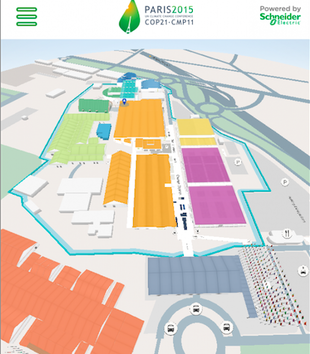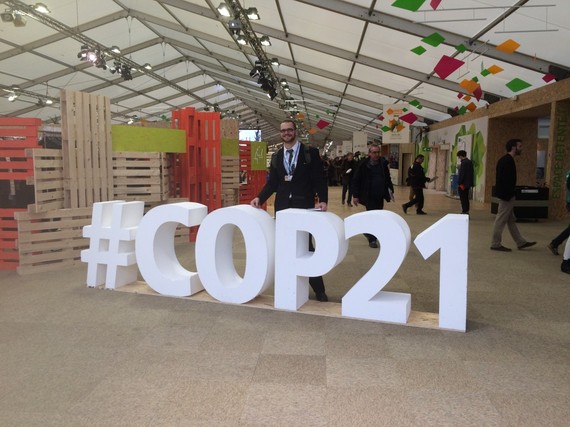Throughout this past week, I have been trying to connect my students to COP21. It has been a challenge, mostly because this conference is unlike any conference I had ever attended.
 My first day in the Blue Zone of Le Bourget was overwhelming -- very overwhelming. The sheer size, amount of information, complexity of the negotiations, new vocabulary, and the weight of expectations left me completely frazzled. I wandered, just trying to wrap my mind around the massive convention center.
My first day in the Blue Zone of Le Bourget was overwhelming -- very overwhelming. The sheer size, amount of information, complexity of the negotiations, new vocabulary, and the weight of expectations left me completely frazzled. I wandered, just trying to wrap my mind around the massive convention center.
At the complex, there is a press building, a non-profit/NGO building, huge restaurants, meeting spaces, and pavilions for each country, all scattered among five huge factory-style buildings. Finally there is Hall 6, where all the negotiations happen.
I made a short video to show my students a glimpse of the conference. Here it is -- be forewarned that it is amateur hour!
That is just the physical space. What is happening within this space is even harder to explain to a class 14 year-olds. As we chatted during a webcast, they wanted to know if an agreement here will solve the problem. I had the displeasure of telling them "no; it won't -- not by itself." The current commitments pledged by UNFCCC countries would still allow the Earth to warm up far too much, and will need to be made stronger in the future. Paris isn't the solution to climate change, but just the first step. Thanks to our current and past emissions, our planet is already locked into a fair amount of warming; how much depends on how quickly we can lower our emissions in coming decades. The warming that we already have is causing noticeable change to the Earth and its systems. The hard thing to say to my students is that we have to plan for more weird and extreme weather in the future. At COP21, we are playing catch up, after over 20 years of inaction. But if this conference is the tipping point that I think it will be, then we can at least hope that our "catching up," or stabilizing of the planet, will start and proceed quickly.
My presence at this climate conference has made me a different and much better teacher. After this week, I have more resources and knowledge about the solutions to climate change than ever before. I know how individuals, cities, utilities, states, and nations can tackle this problem. I better understand the big picture, and why it is so hard to make progress on addressing this multi-faceted environmental challenge. I have a deep appreciation for those who have worked so hard to get us here, to the point where we're on the verge of a strong and binding international agreement to limit climate change. Finally, I have a new desire to share with other teachers how to effectively teach climate change, the most important problem we will face in the coming decades.
I am also excited about the prospects for incorporating the connections that I have made into my classroom: the personal contacts I have made in Paris have said they'll come and talk to my future students and share first-hand accounts of the climate actions they're pursuing. Thanks to my new networks formed at COP21, my classes will have the opportunity to connect with other classes around the world and learn together about this global problem.
In setting off for Paris, I intended to bring my students to the conference in a small way -- by bringing their position statements to Dr. Holdren -- and to try to bring the conference back to them. But what I didn't realize is that I am the bridge: my students are connected to COP21 through me. I walked in overwhelmed, but tomorrow, I will walk out with a new collection of tools and a new perspective for using them to teach climate change in my classroom.
Minneapolis-based nonprofit, Climate Generation: A Will Steger Legacy, is leading a delegation of 10 Education Ambassadors to COP21 through their Window Into Paris program, December 5-11. These 10 teachers -- representing diverse subject areas, grade levels, and school communities from Denver, Atlanta, upstate New York, western North Carolina and Minnesota -- are connecting their students to climate policy in action, helping to build both climate literacy and the relevance of this issue in their students' lives. Follow their stories via their blogs and daily digests.

